Post by meizzwang on Dec 4, 2011 2:10:51 GMT -5
S. leucophylla Hurricane Creek White is almost extinct in the wild. The plants once grew in a huge field with acres of regular S. leucophyllas, and within the population were a few select white plants. S. psittacina, S. rosea, and several drosera species also grew in this gigantic field.
A paper company owns the land, and bulldozed the entire parcel and planted pines for wood pulp production. Today, the site looks like a planted pine forest, with rows of trees. The only original S. leucophylla plants left on the face of this earth remain in cultivation.fortunately, Barry Rice collected seeds and distributed plants.
2013 update: a few straggler plants have been found at the original hurricane creek white site, although they are being overgrown by surrounding shrubs and barely hanging on. More details can be found here: sarracenia.proboards.com/thread/921/remains-original-hurricane-creek-white
Group shot of S. leucophylla 'Hurricane Creek White' Baldwin Co, AL. There are about a dozen different clones in this population:
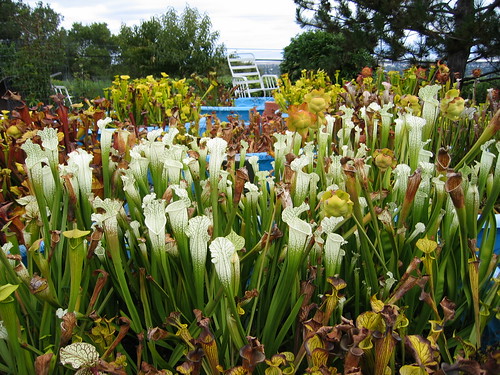
Notice how much whiter they are than the regular S. leucophyllas in the background:
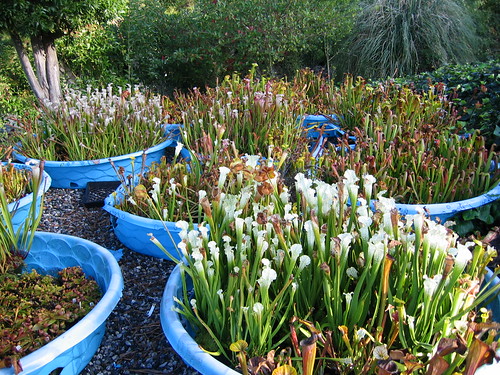
One of the best clones in my collection: S. leucophylla 'hurricane creek white' clone F. Baldwin Co, AL:
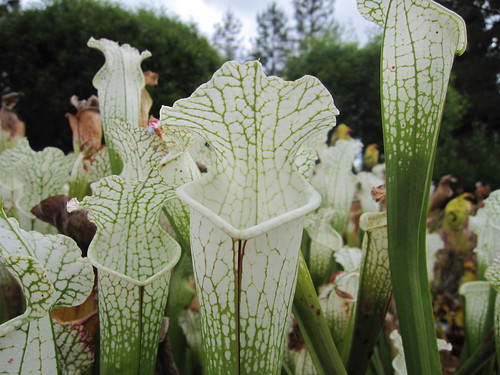
Another pic of S. leucophylla Hurriane Creek White Clone F:

S. leucophylla Hurricane Creek White clone E. This picture was taken during the summer months. These plants produce larger and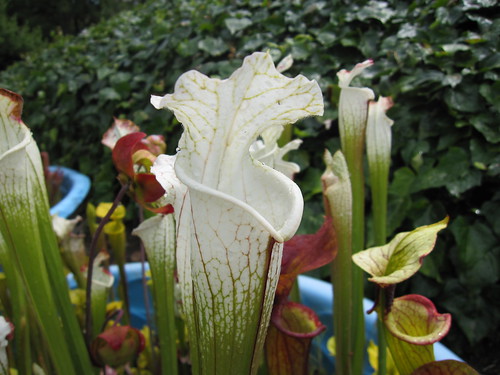
S. leucophylla HCW clone D This is a very vigorous clone that produces decently large pitchers. Traps are shapely and bright white:
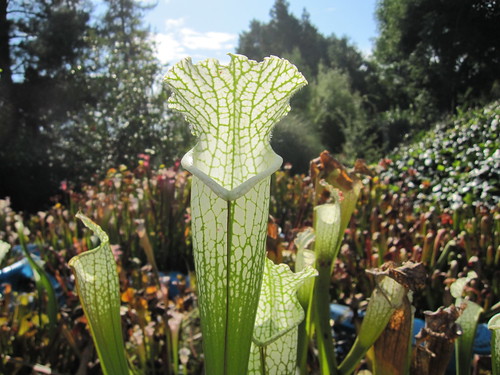 /]meizzwang[/url], on Flickr
/]meizzwang[/url], on Flickr
S. leucophylla HCW. Note that while these plants are white, they are not anthocyanin free. If you notice in this picture, there are tiny dots of color-this can occur on all the clones, but does not significantly affect the overall color of the traps:
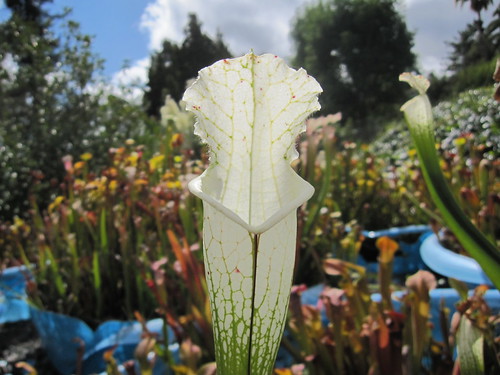

A paper company owns the land, and bulldozed the entire parcel and planted pines for wood pulp production. Today, the site looks like a planted pine forest, with rows of trees. The only original S. leucophylla plants left on the face of this earth remain in cultivation.fortunately, Barry Rice collected seeds and distributed plants.
2013 update: a few straggler plants have been found at the original hurricane creek white site, although they are being overgrown by surrounding shrubs and barely hanging on. More details can be found here: sarracenia.proboards.com/thread/921/remains-original-hurricane-creek-white
Group shot of S. leucophylla 'Hurricane Creek White' Baldwin Co, AL. There are about a dozen different clones in this population:

Notice how much whiter they are than the regular S. leucophyllas in the background:

One of the best clones in my collection: S. leucophylla 'hurricane creek white' clone F. Baldwin Co, AL:

Another pic of S. leucophylla Hurriane Creek White Clone F:

S. leucophylla Hurricane Creek White clone E. This picture was taken during the summer months. These plants produce larger and

S. leucophylla HCW clone D This is a very vigorous clone that produces decently large pitchers. Traps are shapely and bright white:
 /]meizzwang[/url], on Flickr
/]meizzwang[/url], on FlickrS. leucophylla HCW. Note that while these plants are white, they are not anthocyanin free. If you notice in this picture, there are tiny dots of color-this can occur on all the clones, but does not significantly affect the overall color of the traps:








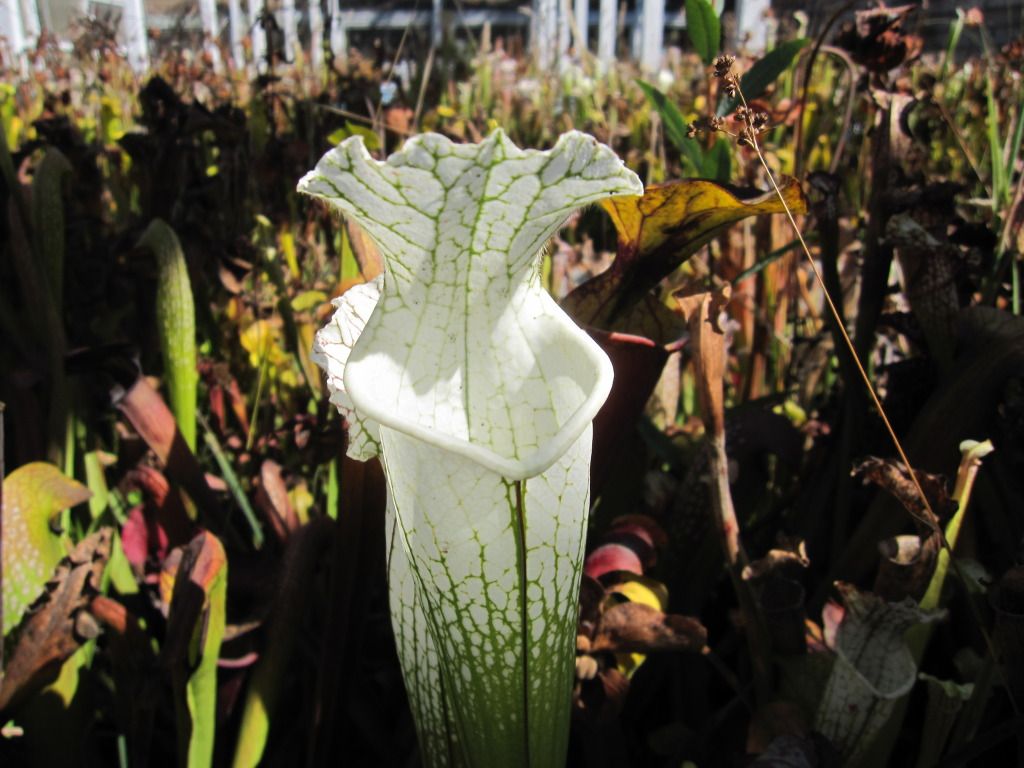


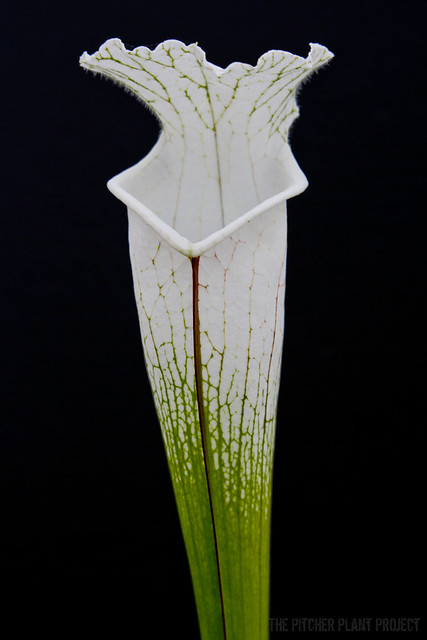
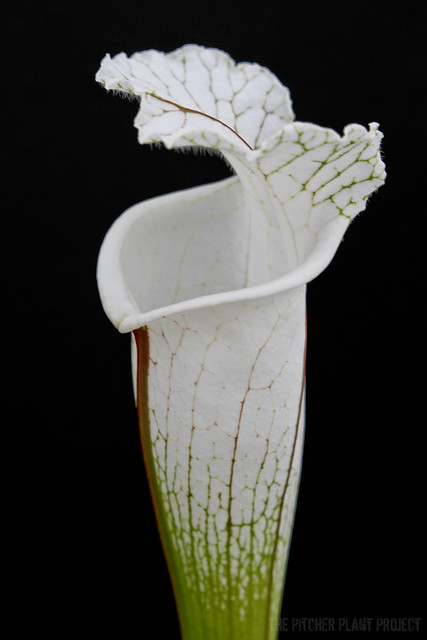


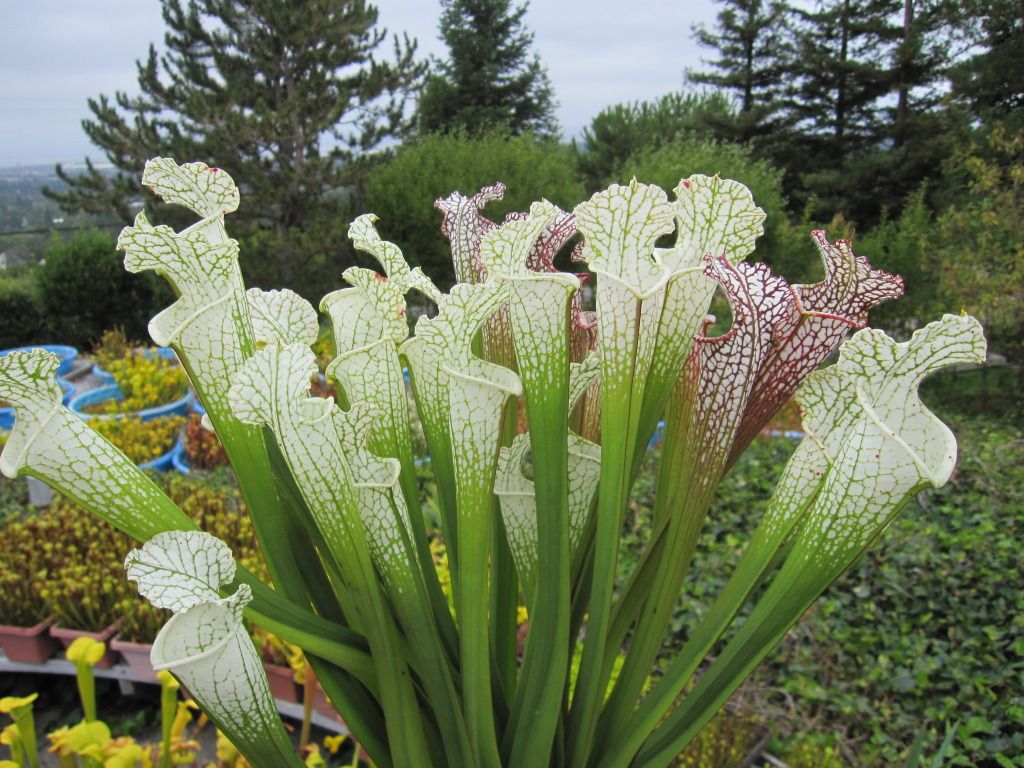
 Here are images of plant progress on 03/16/2023
Here are images of plant progress on 03/16/2023